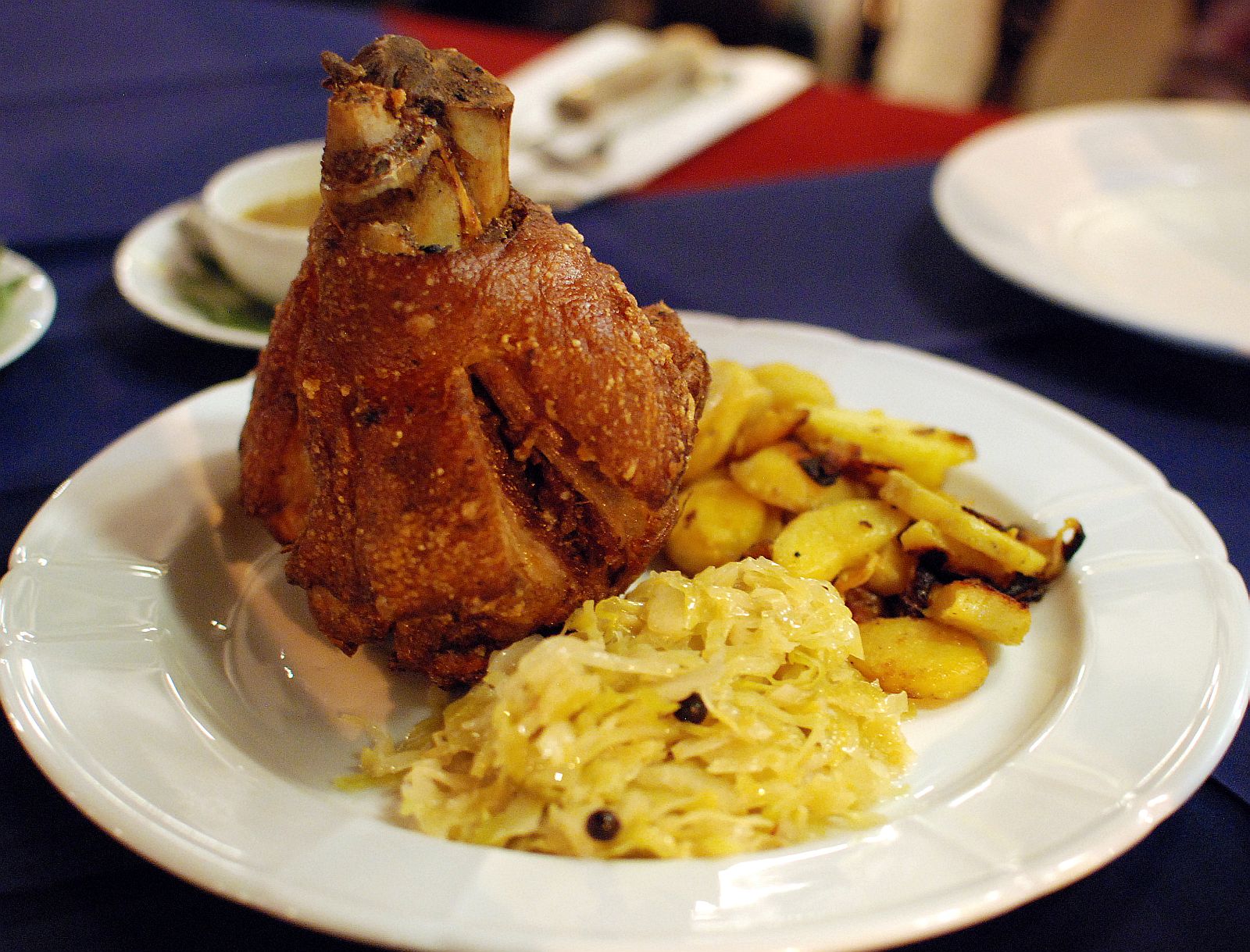- 1 kg fläsklägg
- peppar, salt
- paprikapulver
- 20 g smör
- 1 gul lök, klyftor
- 1 lagerblad
- 1 tsk enbär
- ½ tsk nejlikor
- 1 tsk senapskorn
- 1,25 dl vatten
- 1,25 dl öl
- Spola av fläsklägget och torka det med lite hushållpapper.
- Skär in svålen. Krydda med salt, peppar och paprika.
- Smält smöret i en stor stekpanna. Bryn fläsklägget runtom i 10 min.
- Flytta över till en ugnsäker from, med sky och allt. Lägg i löken, lagerbladet, enbären, nejlikorna och senapskornen. Tillsätt 1,25 dl kokande vatten. Ställ in i 200 grader varm ugn.
- Baka i ca en timme. Pensla ibland med öl och vänd ibland lite på fläsklägget. Ev. behövs det mera vatten. Öl-vatten-skyn kan man göra sås av om man vill.
Servera gärna med surkål.

Leave a Reply